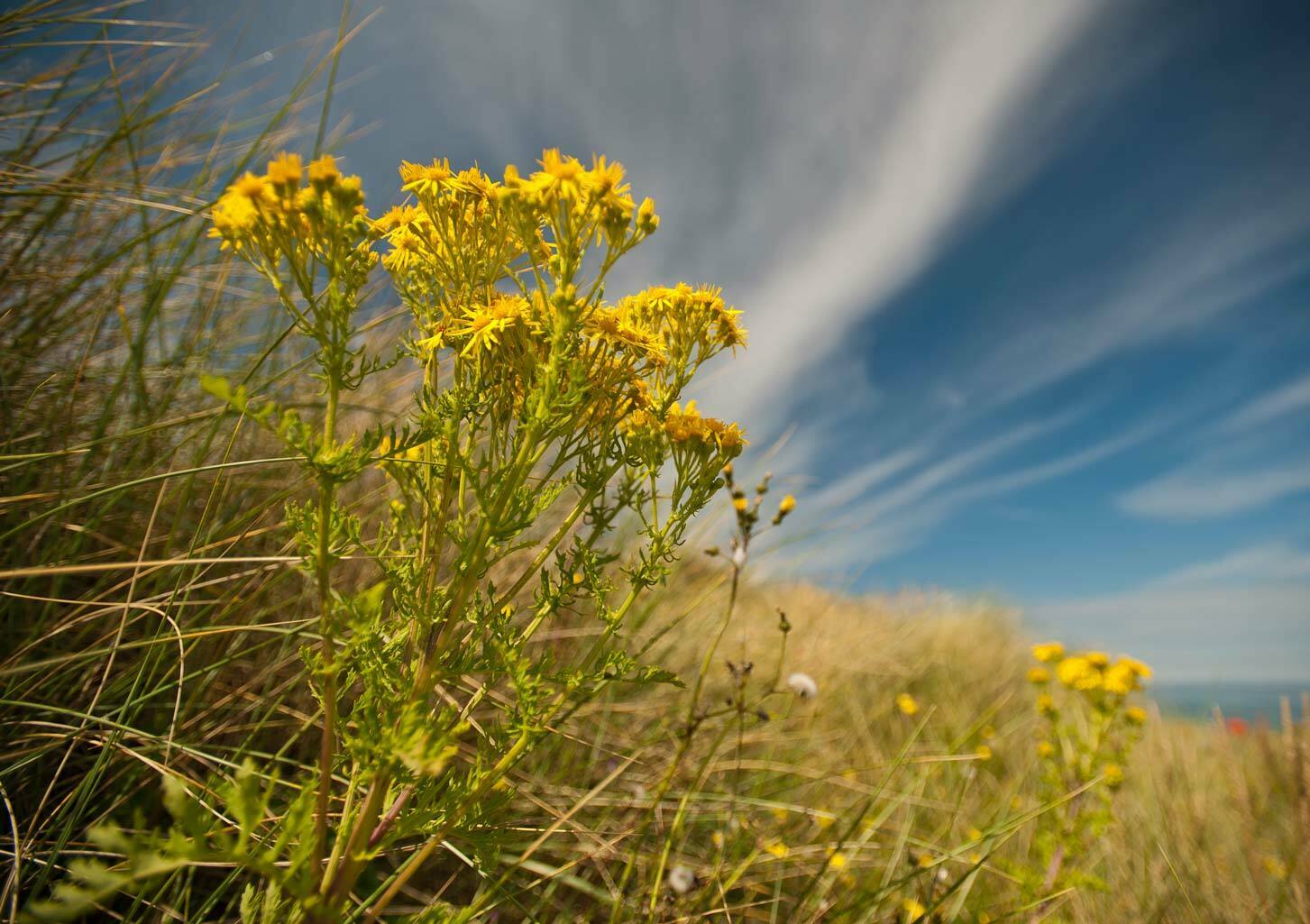About
Site Directory
Copyright © 2025 www.isleofman.com
All Right Reserved
powered by 
Copyright © 2025 www.isleofman.com
All Right Reserved
powered by 


This reserve is situated near the southern tip of the Ayres.
The reserve is bounded by the Lhen Trench, the high water mark and the track from the Lhen Bridge to the shore. It is situated near the southern tip of the Ayres, an area of unique heathland and sand dune. Cronk y Bing has one of the widest strips of yellow dune on the island. In the past sand has been extracted from the back dunes, forming a flatter area behind the leading dunes upon which coastal grassland, grazed by rabbits, has developed. Marram grass (bent) dominates with a range of other plants including pyramidal orchid, sea bindweed, restharrow, common stork's-bill, bugloss, harebell, sheep's-bit, wild carrot, common cornsalad, burnet rose, wild mignonette, sea holly and Isle of Man cabbage.
The Lhen trench is a largely canalised river draining part of the Ballaugh Curragh. The trench has a range of additional species including water mint, hemlock water dropwort, marsh woundwort, cudweed, angelica, marsh bedstraw and figwort. The adjacent shoreline is a favoured breeding ground for the little tern; one of Britain's rarer seabirds. Other breeding birds include oystercatcher, ringed plover and meadow pipit. Bird watchers will find the reserve rewarding for coastal watching, especially during the autumn when divers, grebes, sea duck, skuas, a variety of gulls and waders are often seen. Off the coast seals, basking sharks and diving gannets may also be seen.
Erosion and accretion are being monitored. An experimental section of brushwood fencing is in place to reduce windspeed and so cause deposition of blown sand when the tide is out. The fence and bank of sand should afford protection from the sea to the previously eroding dune face.
Grid ref NX 378015. On the A10 take the track to the beach immediately south of the Lhen Bridge (379013). There is car parking space at the seaward end of the track.